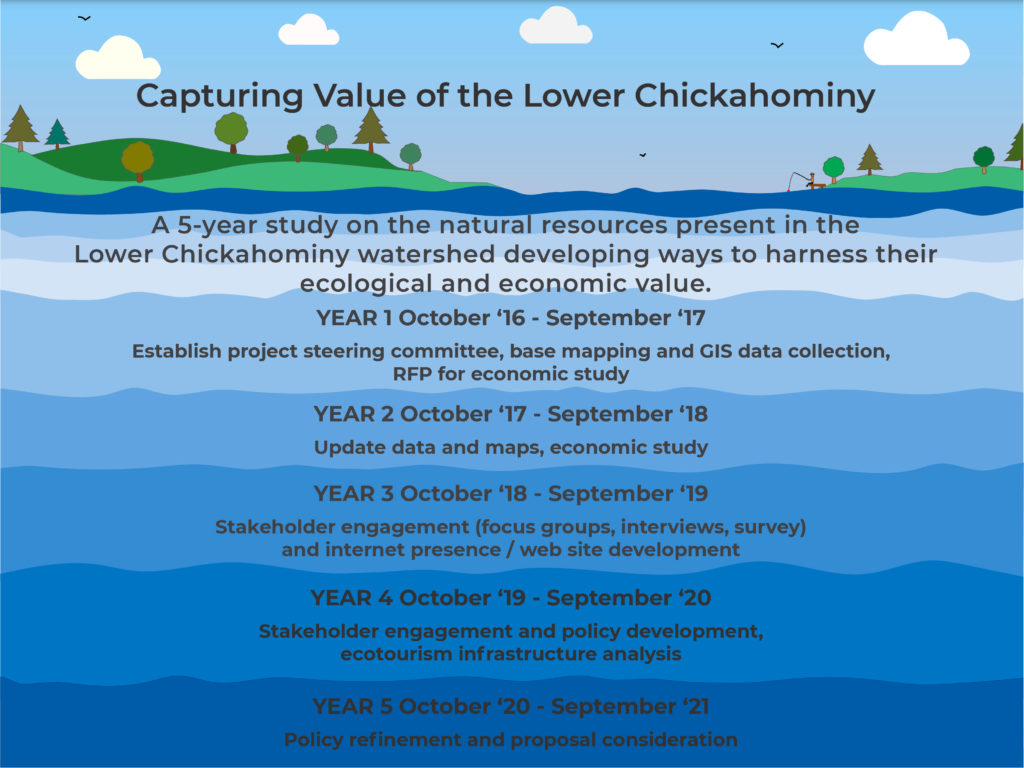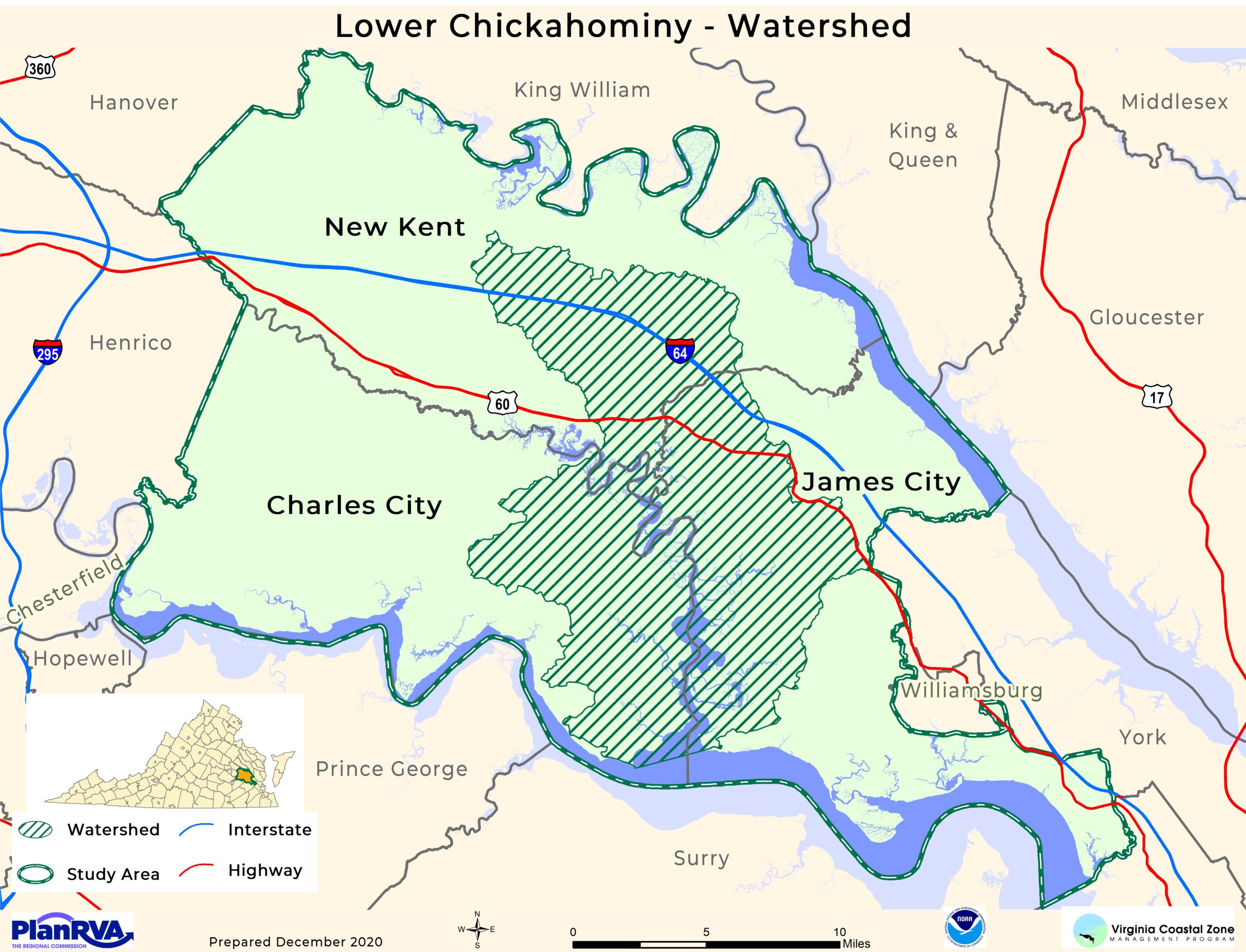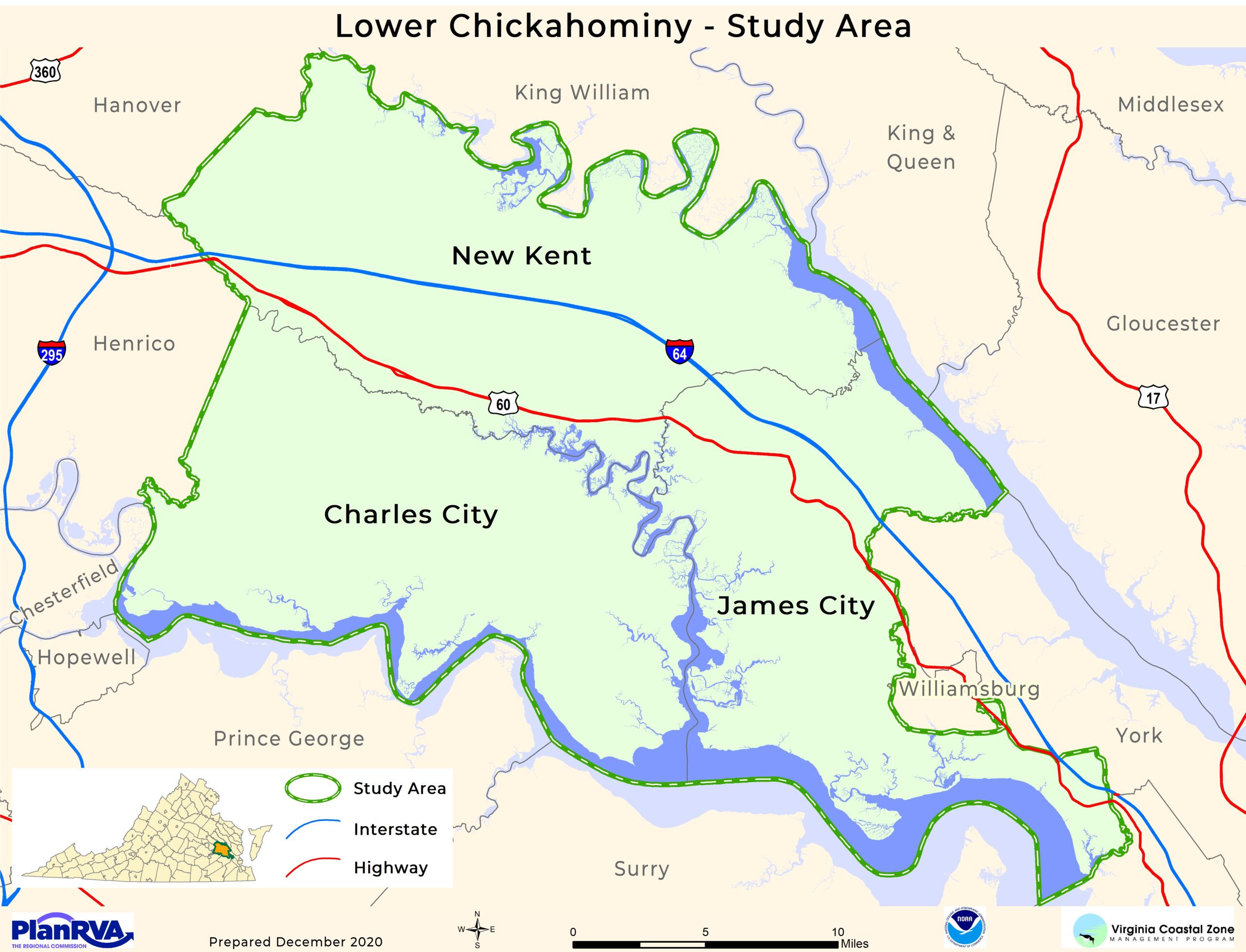Rivers Planning
Capturing Value of the Lower Chickahominy
The 87-mile long Chickahominy River is located in eastern central Virginia. The river was named after the Chickahominy Tribe, a Native American tribe that was settled along the river when the English colonists arrived in 1607. During this 5-year project, funded by the Virginia Coastal Zone Management Program, PlanRVA will study the natural resources present in the Lower Chickahominy watershed and work with stakeholders to develop policy and action steps to accomplish a dual goal: natural resource conservation and economic development.

The Lower Chickahominy stretches from Walkers Dam at the eastern edge of Chickahominy Lake downstream to the confluence with the James River. The hatched area on the map below indicates the watershed area of the Lower Chickahominy River. A watershed is the land and area that drains to and impacts a waterbody.

The Lower Chickahominy watershed is said to contain “nearly pristine” marshes and swamp forests and is home to some of the most impressive fresh tidal vegetation in the Mid-Atlantic region. Scientists performing fieldwork during the first year of this project "noted that the tidal freshwater wetland communities were among the highest quality remaining along Virginia’s tidal rivers." The study area for this project includes all of Charles City County, James City County, and New Kent County.

New - Target Industry Report
Year Three: Stakeholder Outreach Summary Report
During year three of the Lower Chickahominy Project PlanRVA worked with the Institute of Engagement and Negotiation at the University of Virginia on an iterative stakeholder engagement process including thought leader interviews, focus groups, and a public survey. Read more about it here.

This project, Task # 93.01 was funded by the Virginia Coastal Zone Management Program led by the Virginia Department of Environmental Quality through Grant FY18 #NA18NOS4190152 of the US Department of Commerce, National Oceanic, and Atmospheric Administration, under the Coastal Zone Management Act of 1972, as amended. The views expressed herein are those of the authors and do not necessarily reflect the views of the US Department of Commerce, NOAA, or any of its subagencies.



